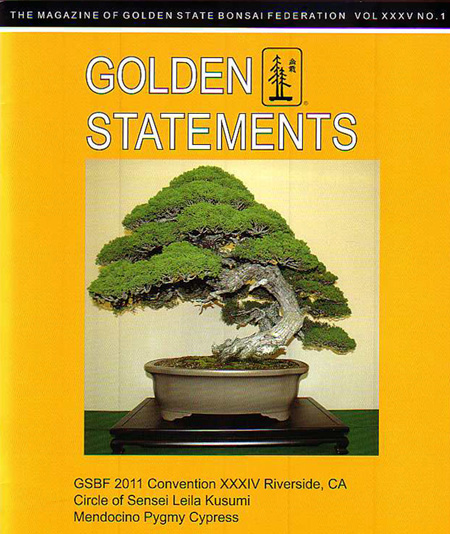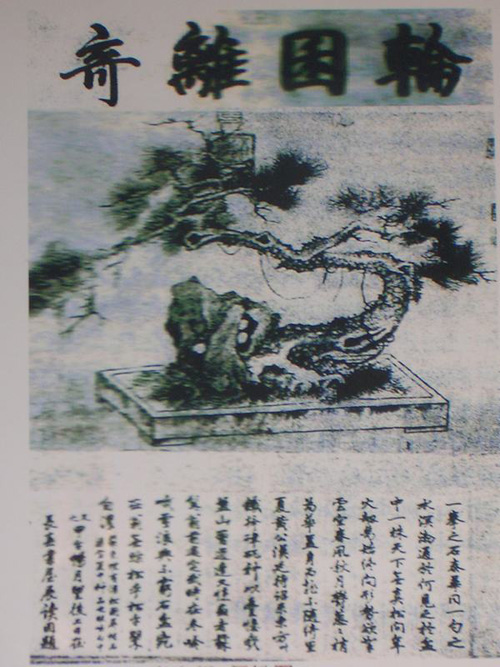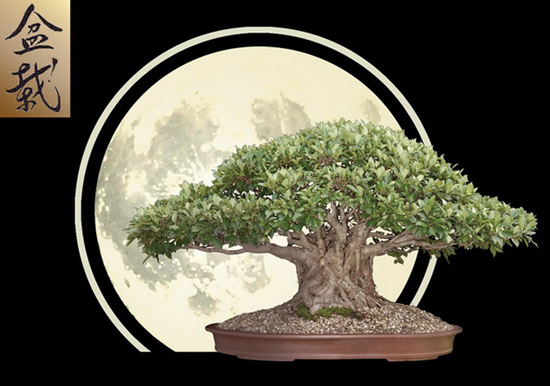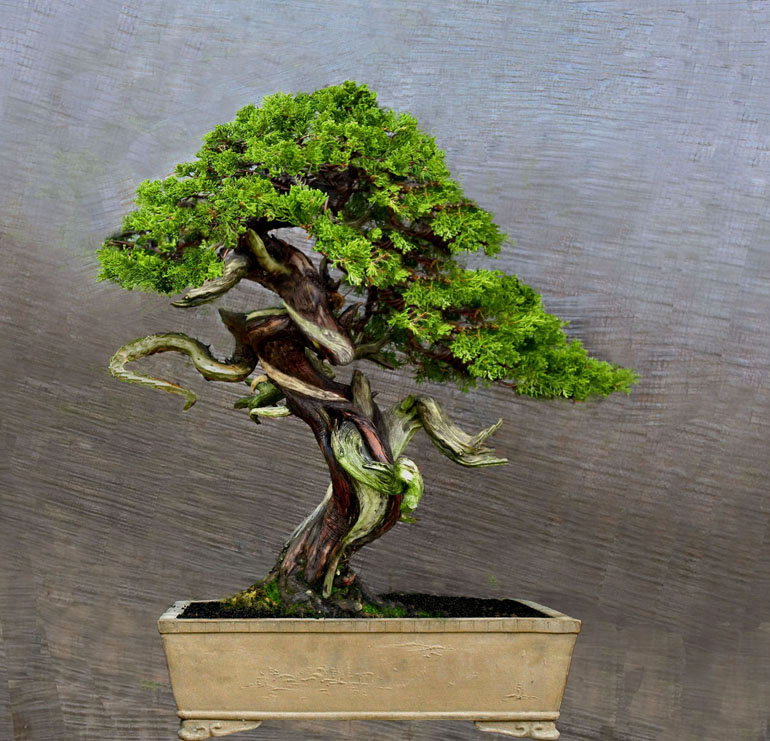 Robert Steven's simulation of a Juniper that was submitted by Joe Graviss (the original photo is below).
Robert Steven's simulation of a Juniper that was submitted by Joe Graviss (the original photo is below).
Robert Steven’s critiques have been an anchor here on Bonsai Bark for almost six years. His first of approximately forty critiques (so far) appeared in 2010 (Bark dates to 2009).
Each critique is a lesson in bonsai styling and taken together they constitute an extensive course in Robert’s bonsai tradition (if you asked me about Robert’s tradition I’d say his primary expertise lies in Penjing and tropical bonsai, but extends well into other areas of bonsai… though I’m not sure that’s how he would say it).
Speaking of other areas of bonsai, this temperate zone conifer presents several challenges and of course, Robert’s spot on solutions, which include an examination of twisting versus bending shari. Something you don’t see everyday.
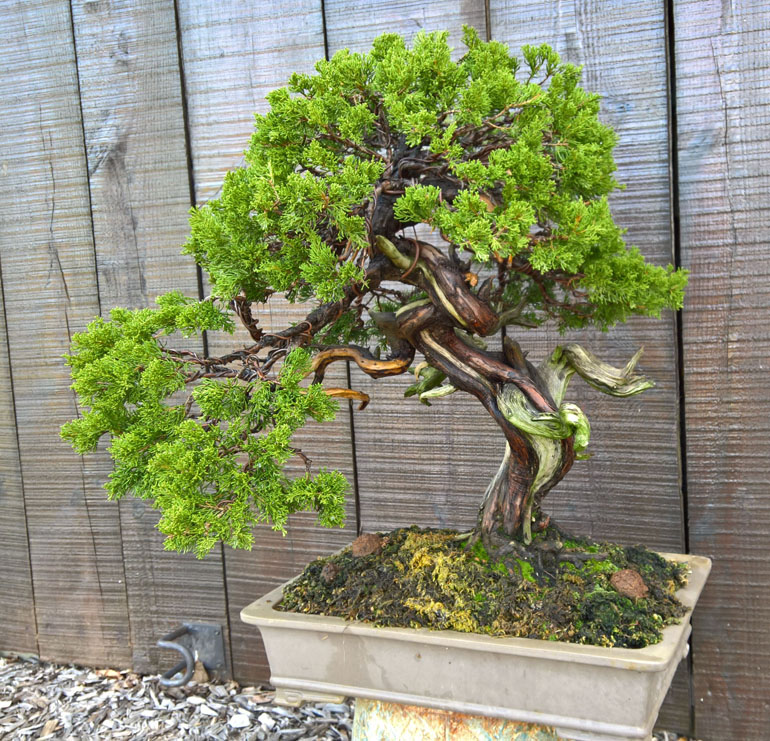
The original photo as submitted by Joe Graviss.
Robert’s Comments
I only received one photo, so I can only give comments using the angle shown on the photo, though this angle looks good enough.
From the photo, it is obvious that this bonsai is designed with the flow to the left, based on the lower main branch that grows to the left. But this branch is not strong enough to be the dominant line. The upper part of the tree which flows to the right, is stronger, as is the ramification and resulting foliage. Consequently, with the flow to the left, it is difficult to obtain ideal visual balance.
I would suggest restyling to follow the original flow of the tree to the right. Turn the lower left branch into jin, reshape and refine the foliage (as illustrated by my simulation). Lift the trunk slightly to the right for better balance and repot for a better overall composition.
Last but not least, I would like to comment on the shari as it was not ideally created. The Shari should be created in a twisting line that rounds the trunk because the trunk’s natural line is twisting and not bending. The shari as presented bends along the trunk, rather than twisting around it.
Although it cannot be corrected, I still made the simulation to allow you to visualize the ideal shari. Shari is formed from top down, starting from a dead branch and following the living vein down the trunk, rather than bottom up. And in this case, it should create a twisting line to enhance the natural drama.
*** My critique and recommended solution might not always fit your taste because there is always personal preference and option in designing bonsai. But I always try to give my opinion based on artistic principles and horticultural convincing approach.
To understand better my concept, please read my books Vision of My Soul (out of print) and Mission of Transformation which is available at Stone Lantern.
My Face Book page : http://facebook.com/robertbonsai
25% off Roshi Bonsai Tools
25% off Koyo Bonsai Tools
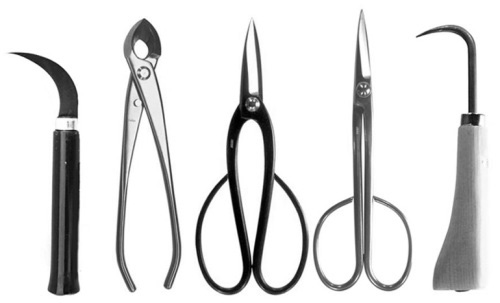
FREE Shipping for U.S. orders 49.00 or more
We found this exceptionally long cascading bonsai on the Bonsai South (Australia) website (the old link no longer works). I'll guess it's Ficus of some sort. The blank gap above the photo is intentional and has to do with how our posts appear on social media. The original photo is below.
Another, not so eccentric Ficus from the Bonsai South gallery.
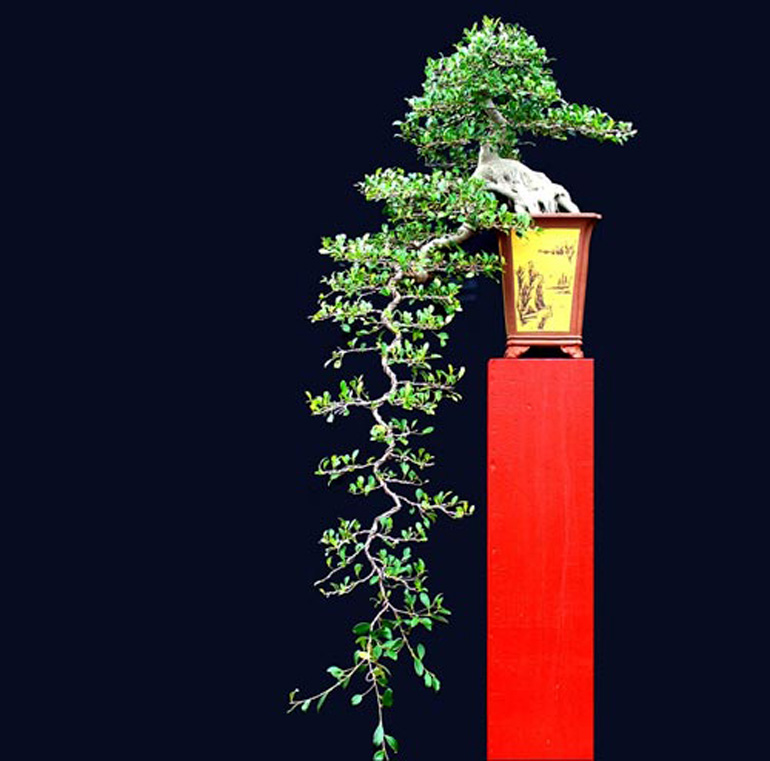
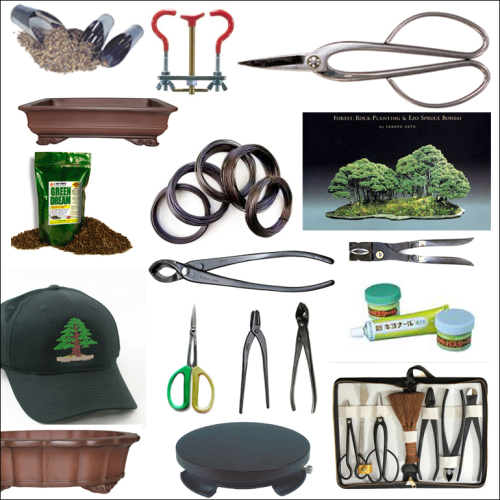
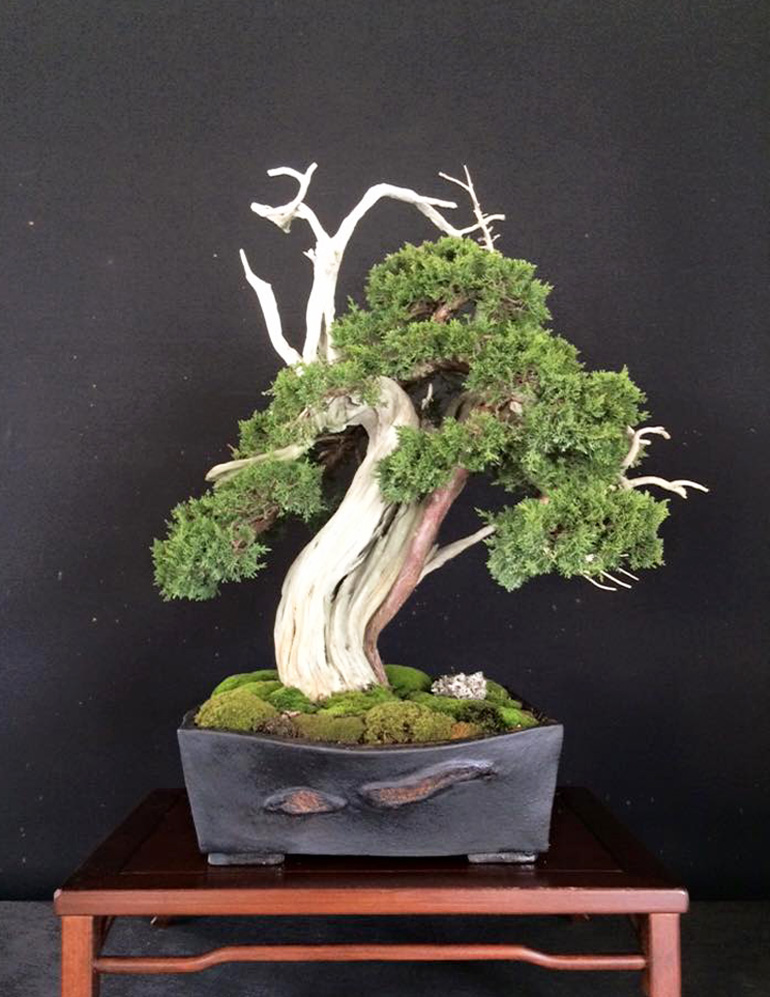
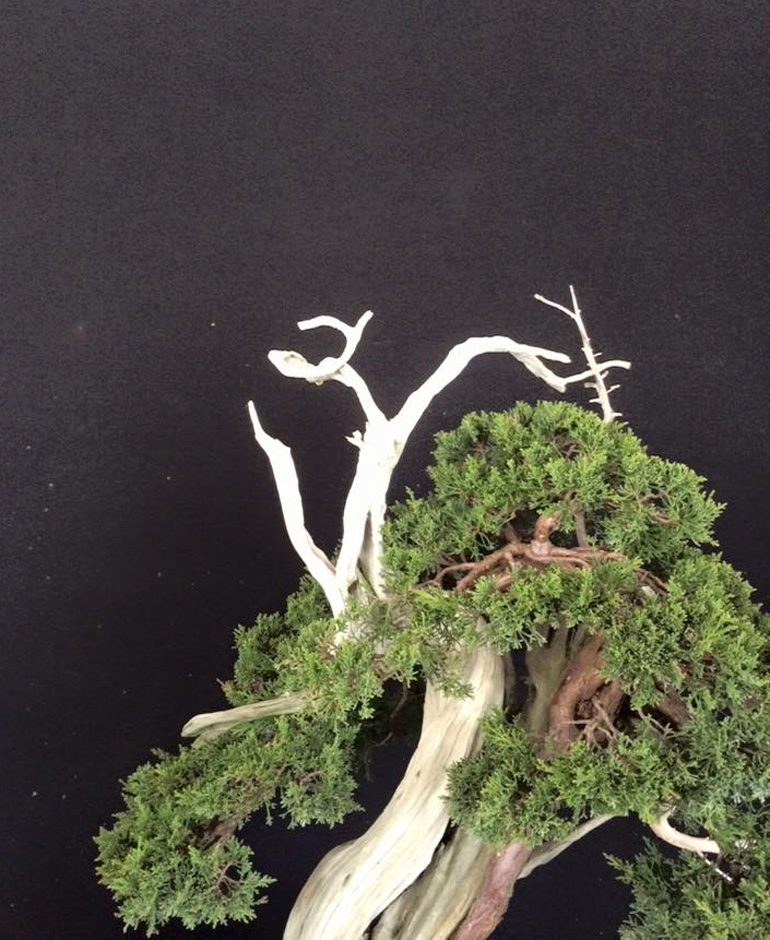
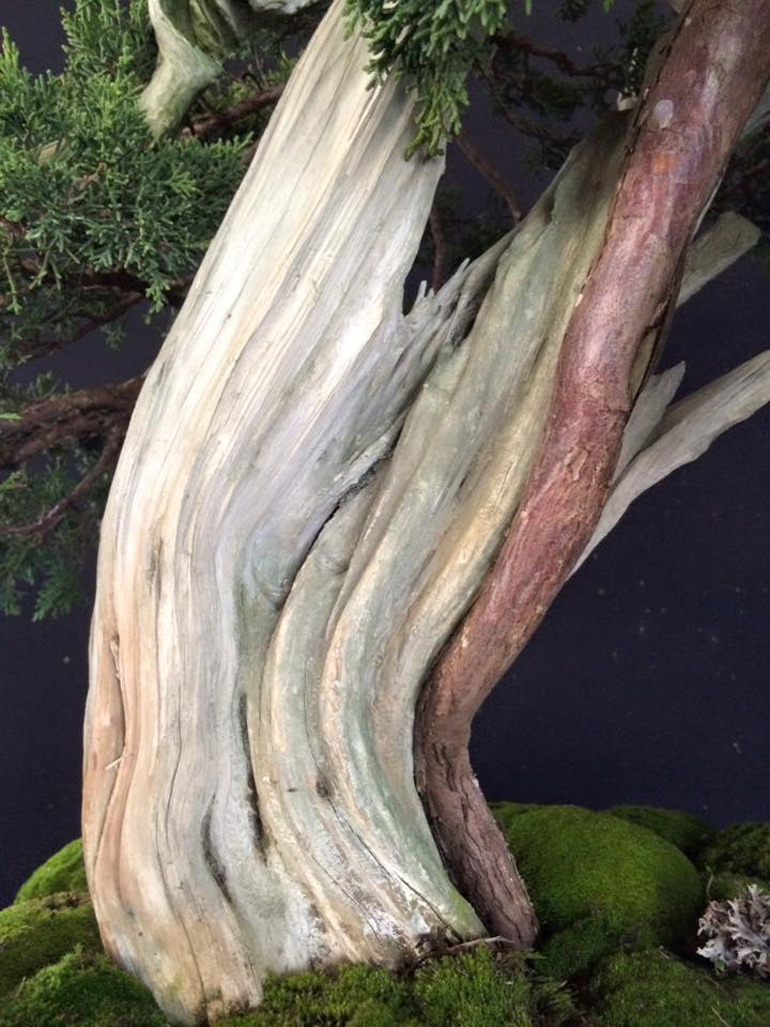
 Interested in learning a lot more about bonsai beauty and health?
Interested in learning a lot more about bonsai beauty and health?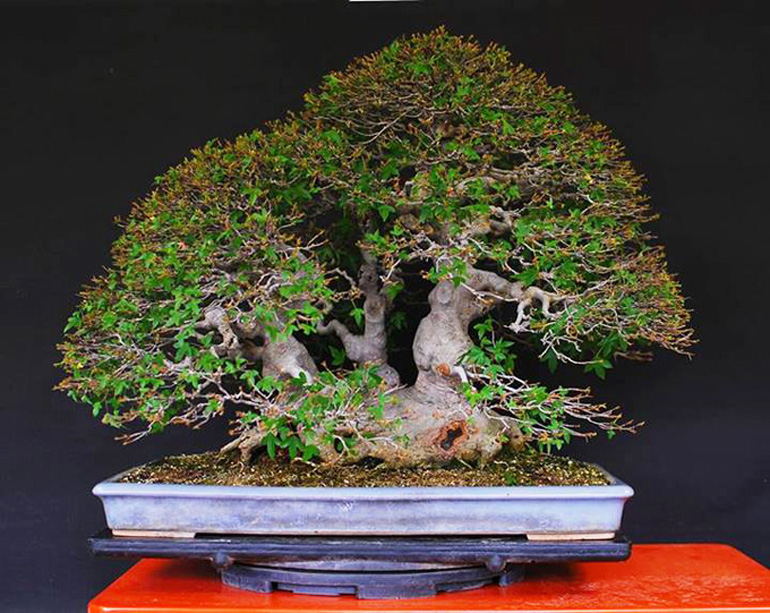 Here’s Juan Adrade’s English caption for this magnificent old Trident maple. “Partial defolation on one of the grandfather trees. Close to 100 yrs old." Here's his Spanish: "Defoliación de las ramas exteriores en uno de los tridentes del abuelo de mi maestro. Este arbol posiblemente se acerca a los 100 años." You might notice the part about exterior branches in the Spanish. This would indicate that Juan is redirecting energy away from the outer tips and down closer to the center of the tree. This photo is from
Here’s Juan Adrade’s English caption for this magnificent old Trident maple. “Partial defolation on one of the grandfather trees. Close to 100 yrs old." Here's his Spanish: "Defoliación de las ramas exteriores en uno de los tridentes del abuelo de mi maestro. Este arbol posiblemente se acerca a los 100 años." You might notice the part about exterior branches in the Spanish. This would indicate that Juan is redirecting energy away from the outer tips and down closer to the center of the tree. This photo is from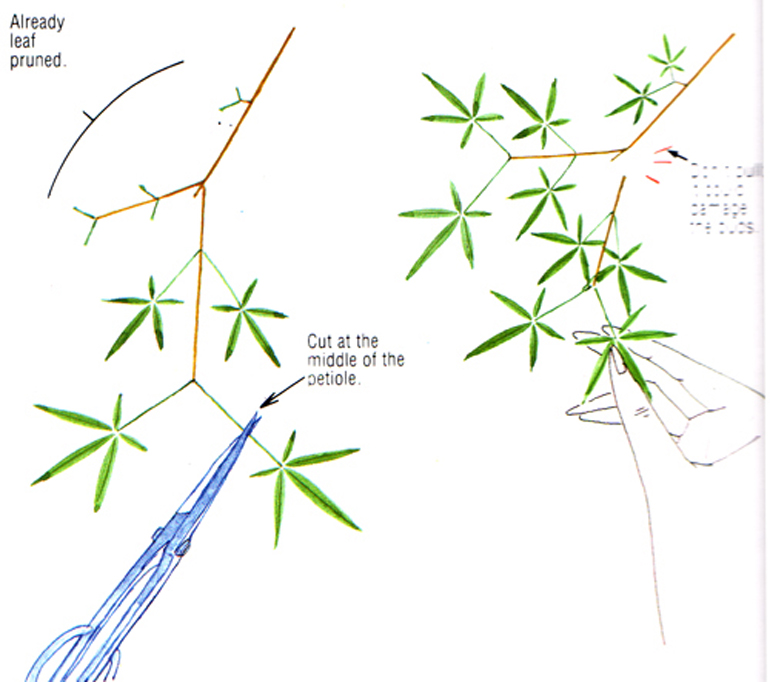
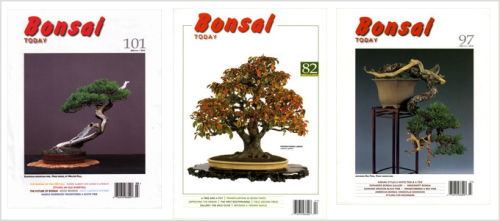
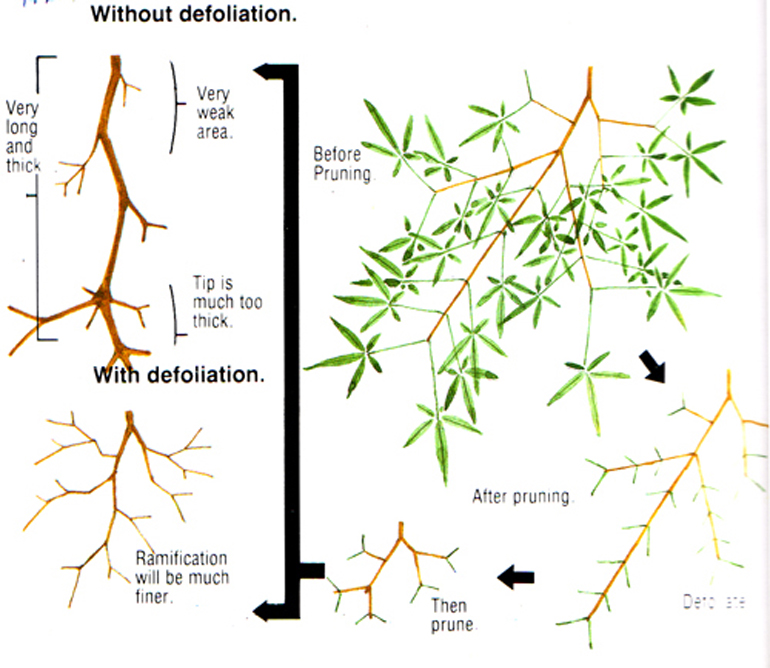 Defoliate, then prune
Defoliate, then prune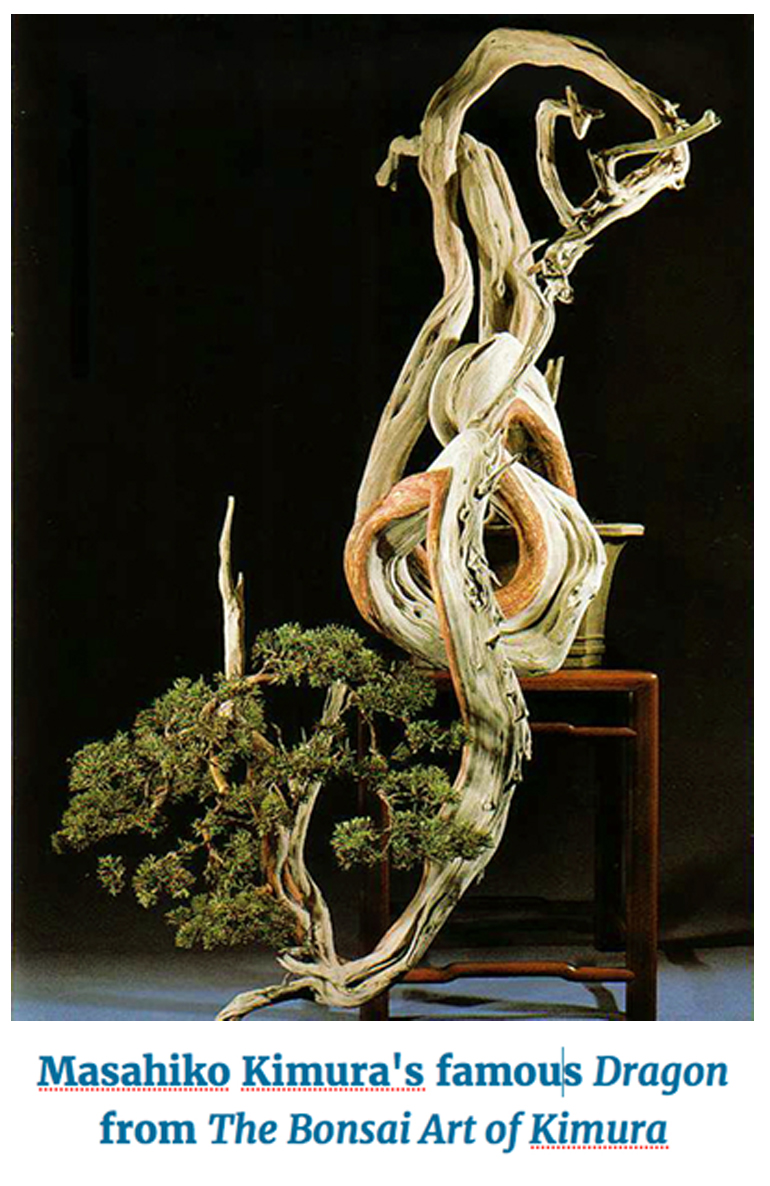
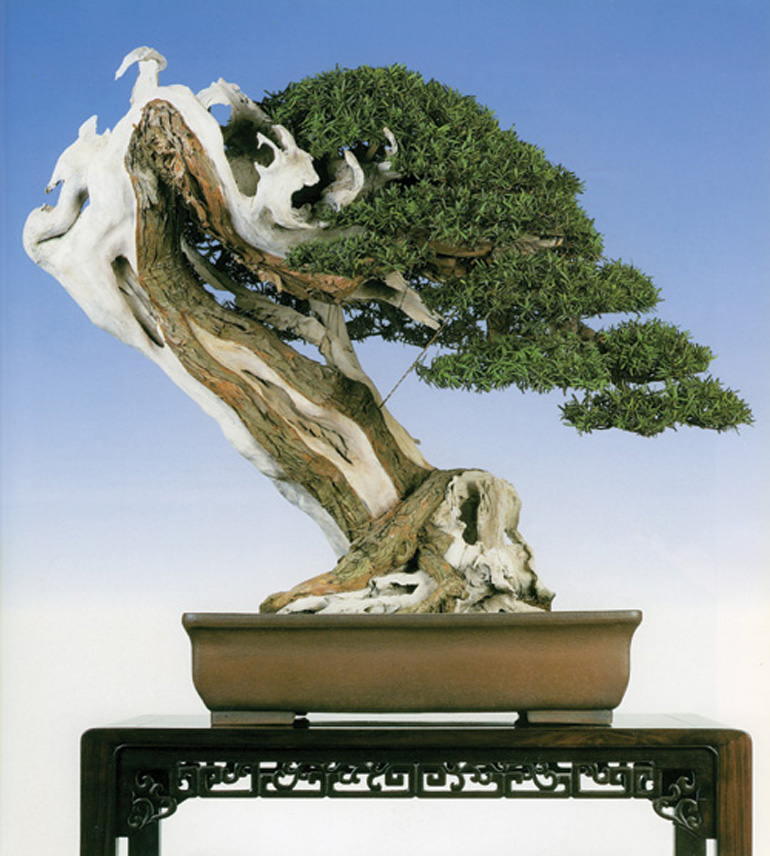 The powerful Taxus by Master Kimura conforms a little more to a conventional bonsai shape. But considering when it was done, it was ahead of its time and it remains one of the best bonsai you'll see anywhere. The photo is from
The powerful Taxus by Master Kimura conforms a little more to a conventional bonsai shape. But considering when it was done, it was ahead of its time and it remains one of the best bonsai you'll see anywhere. The photo is from 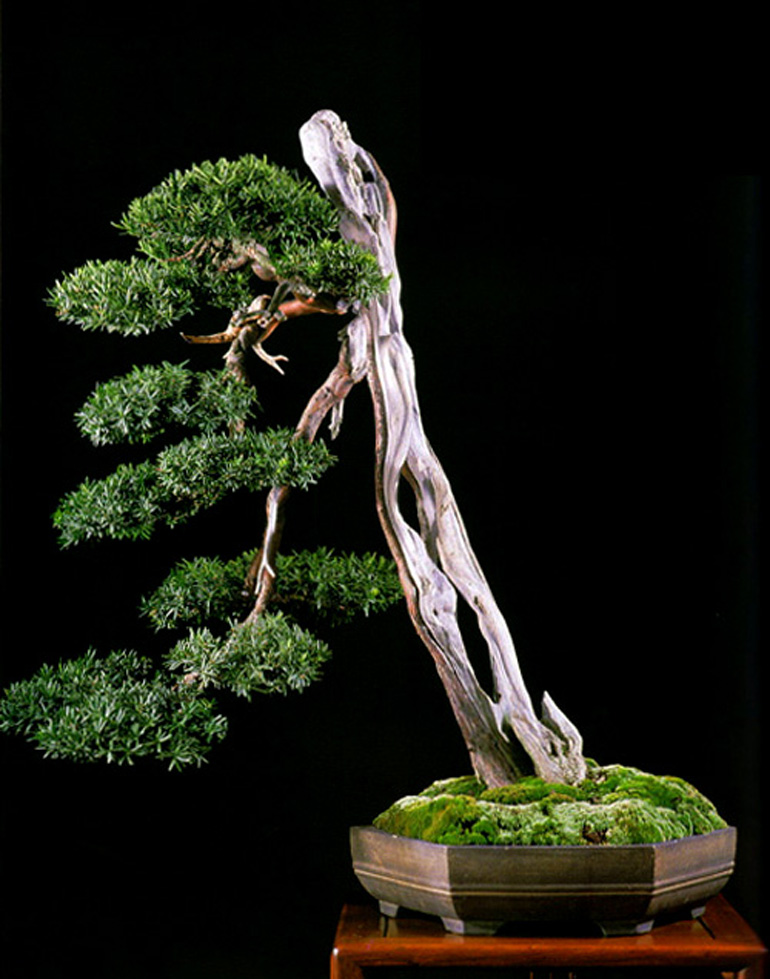 This Taxus is one of Kimura's personal favorites (also one of mine). It's from The Bonsai Art of Kimura.
This Taxus is one of Kimura's personal favorites (also one of mine). It's from The Bonsai Art of Kimura.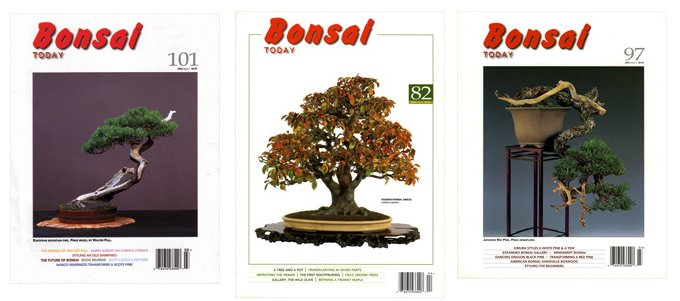
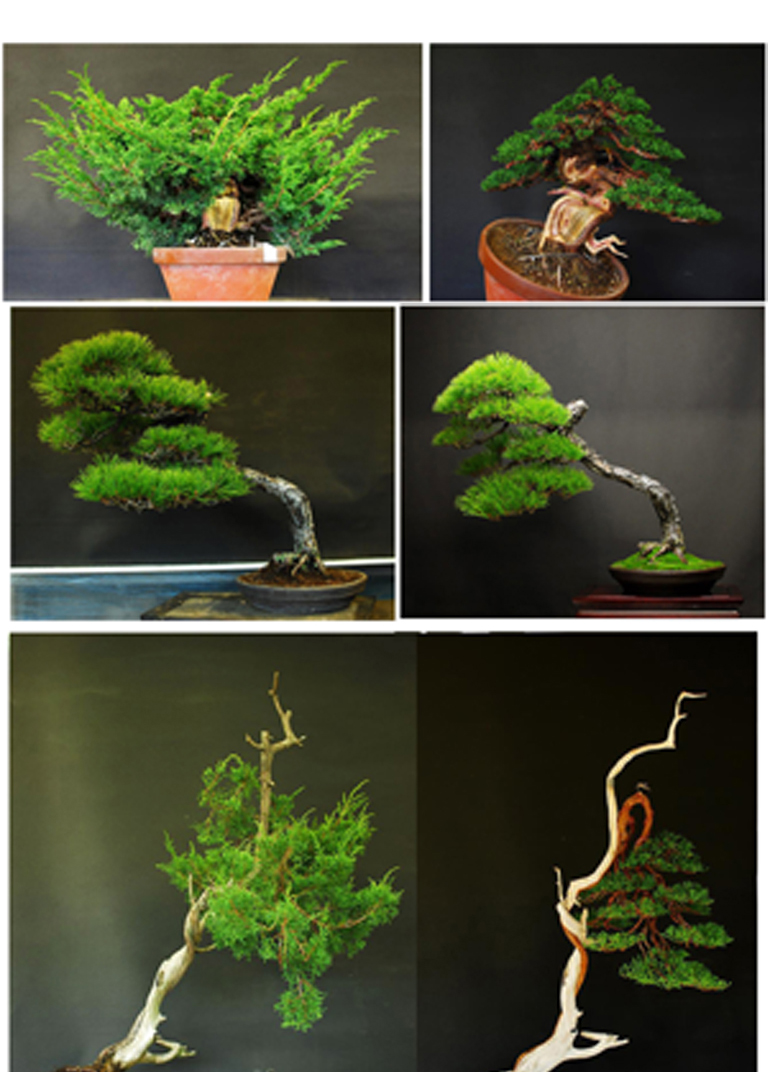
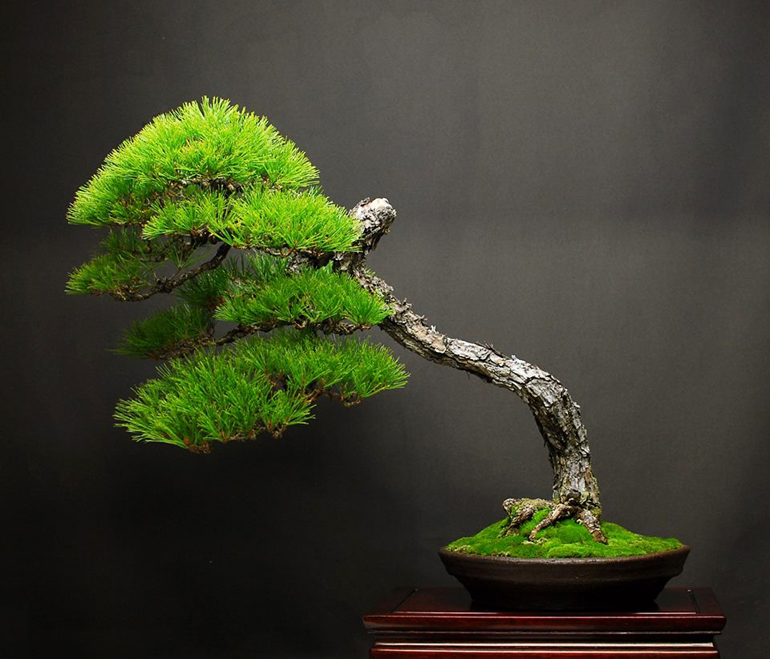
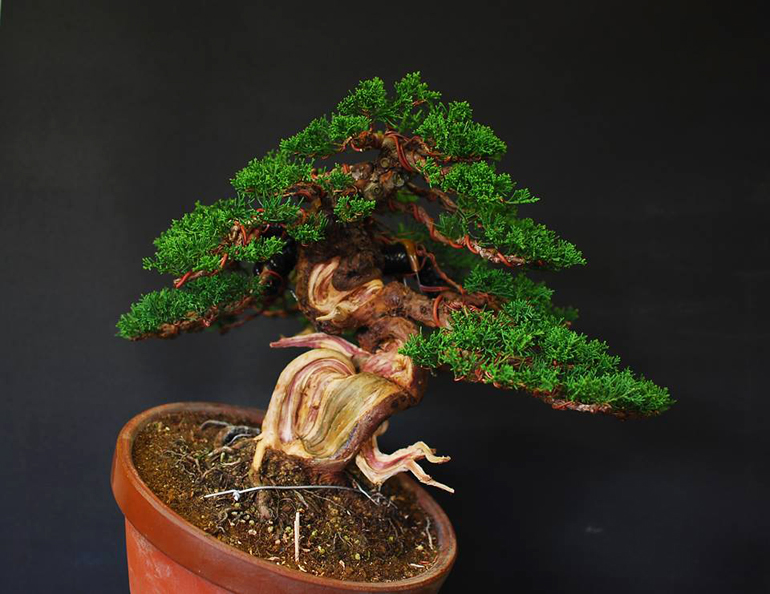
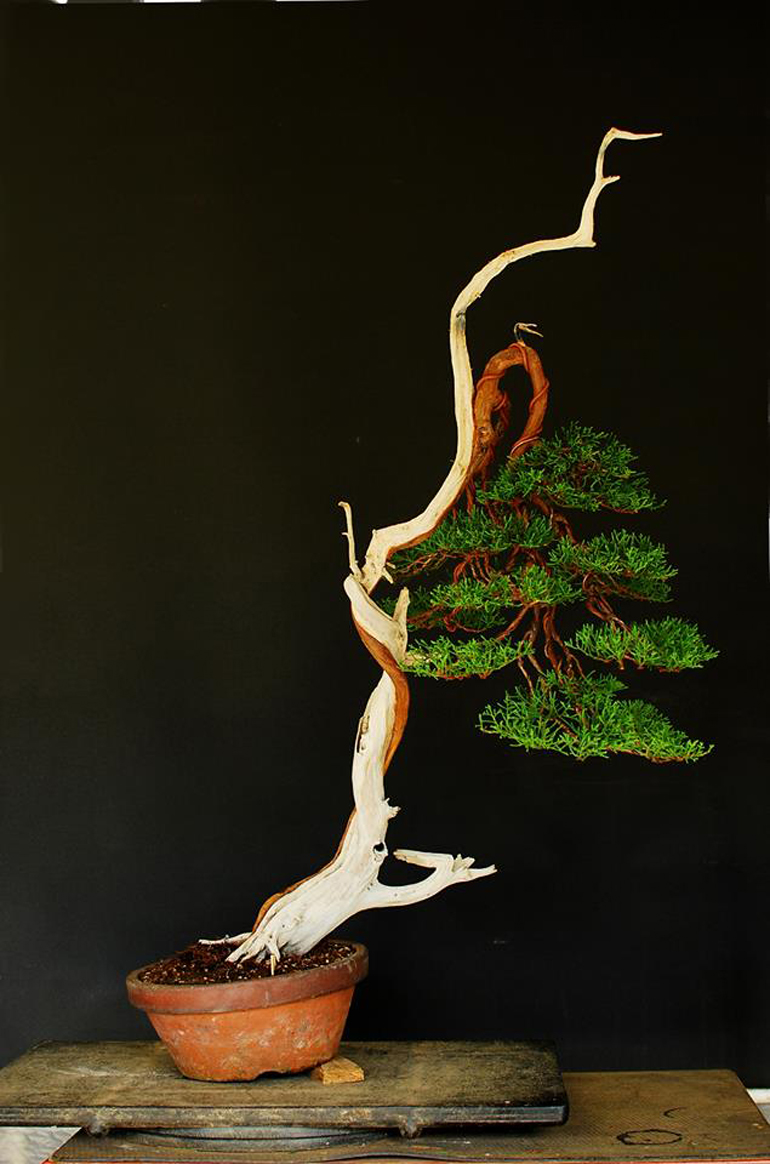
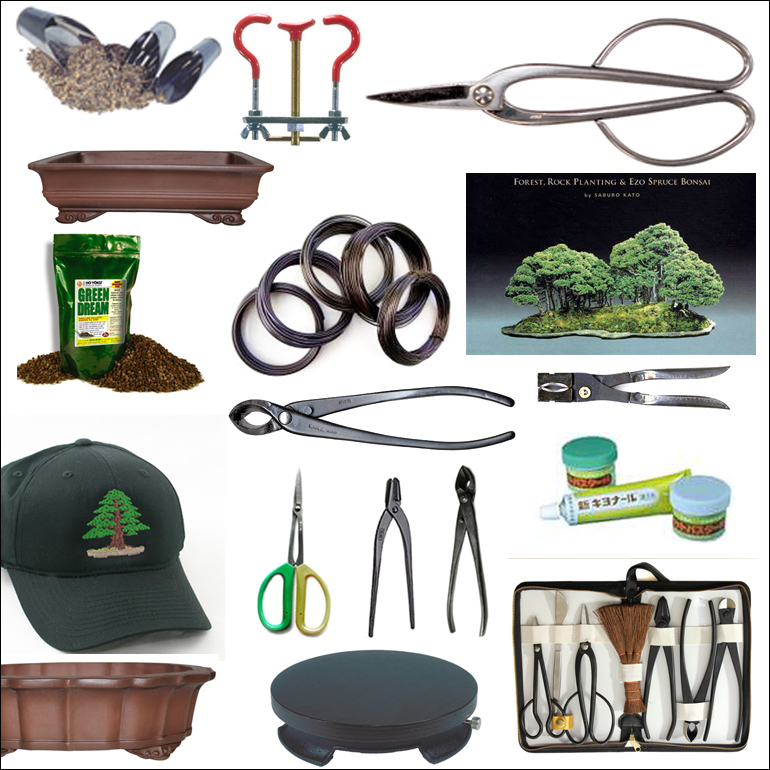
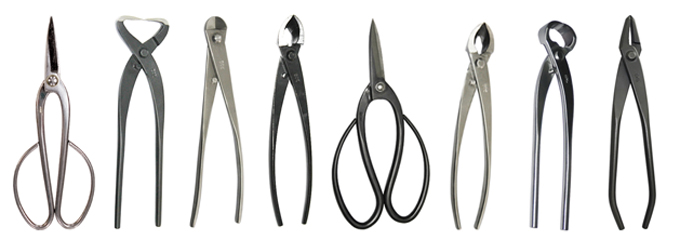


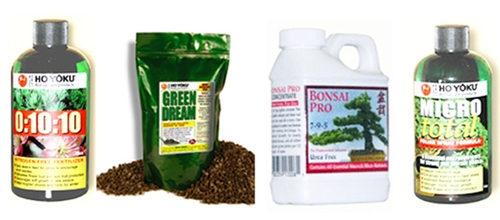
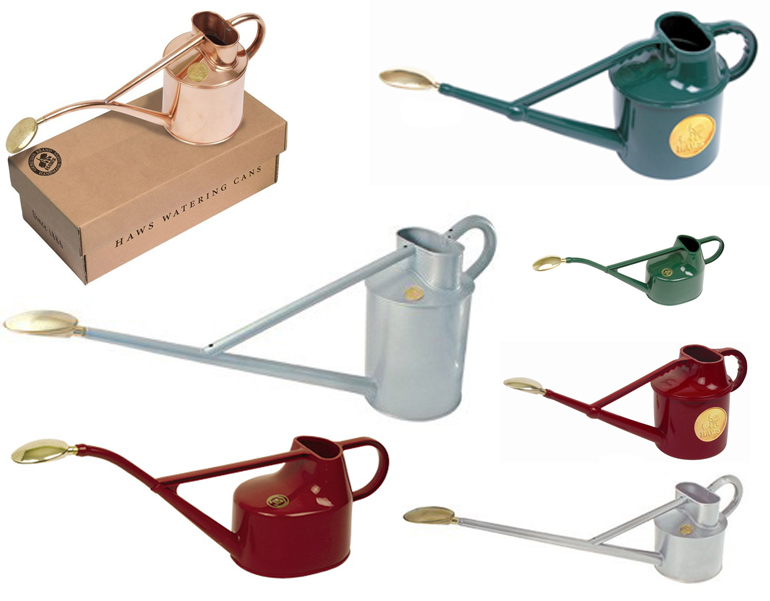
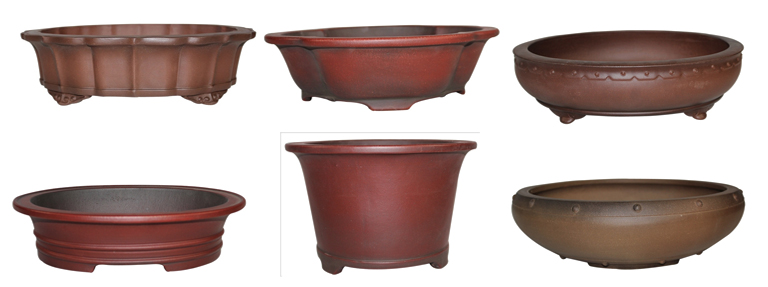
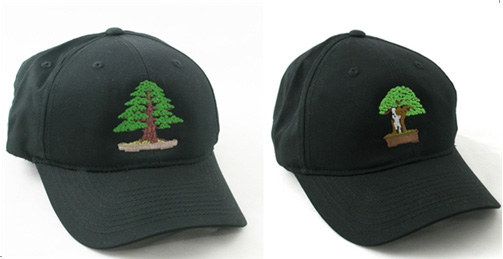
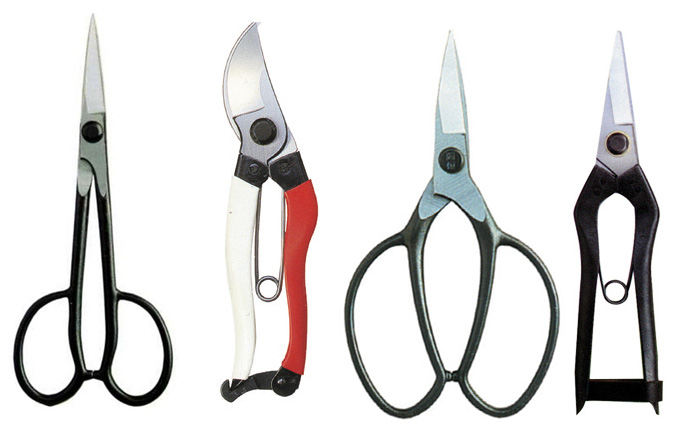
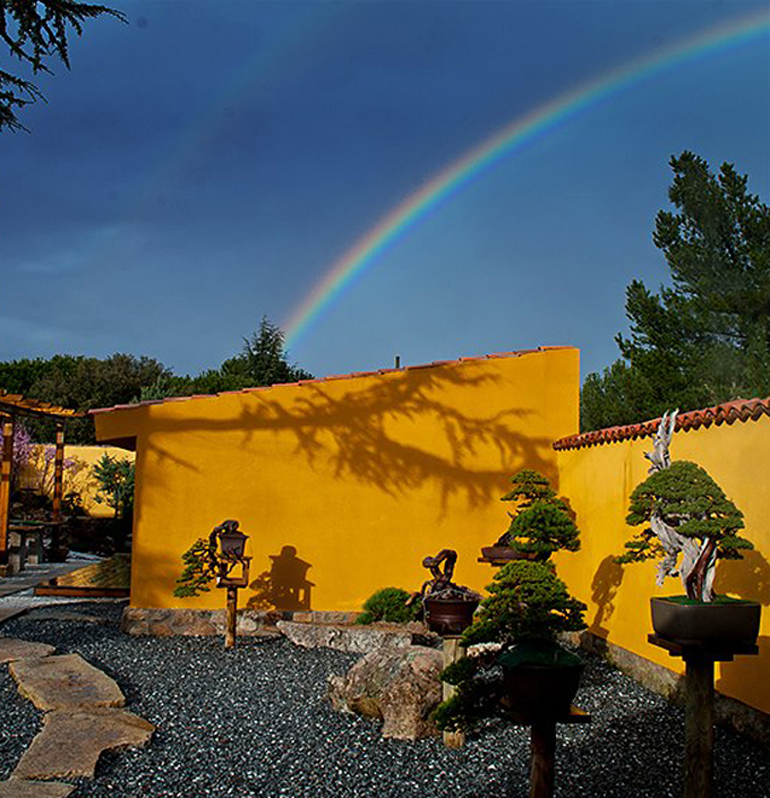
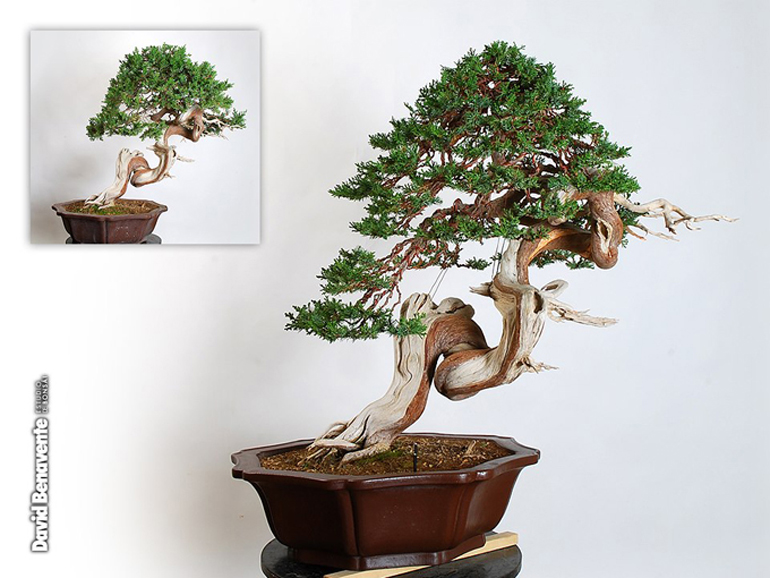
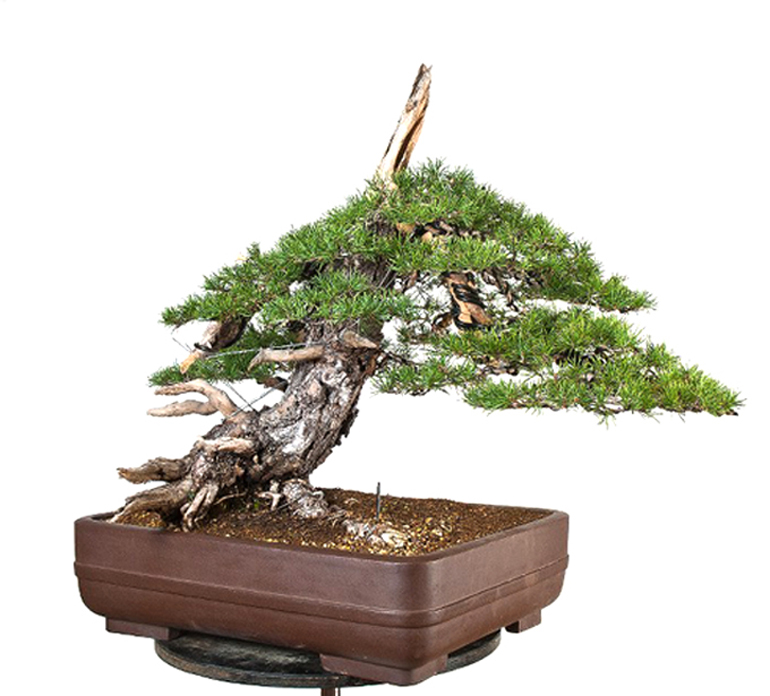

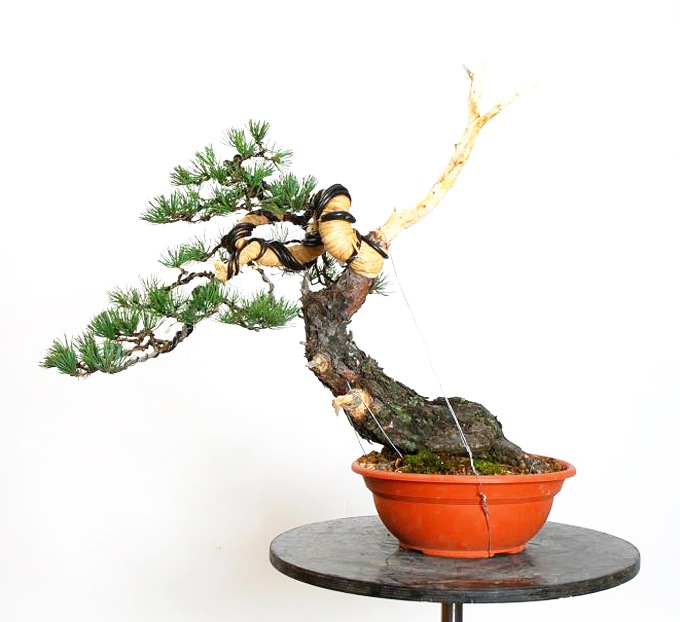
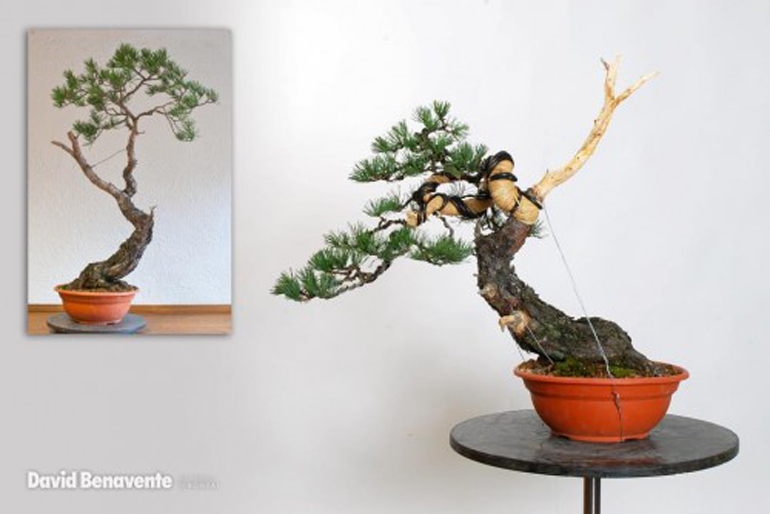
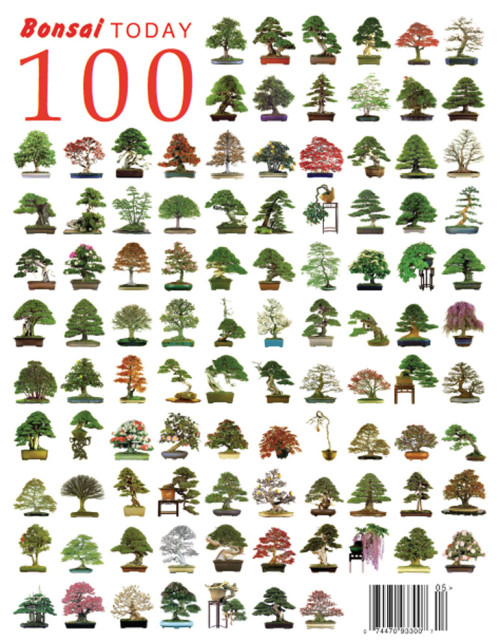
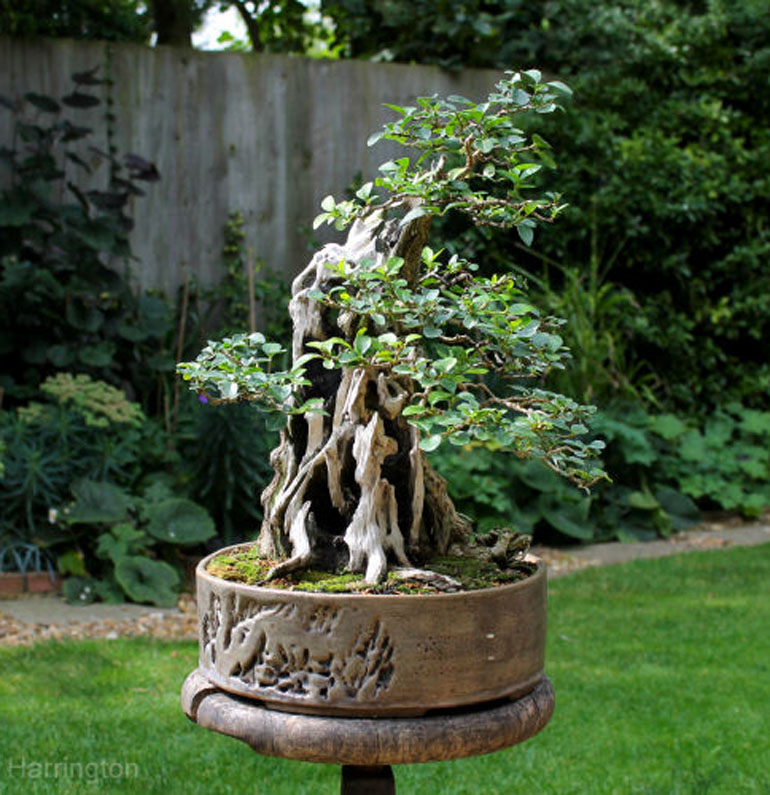
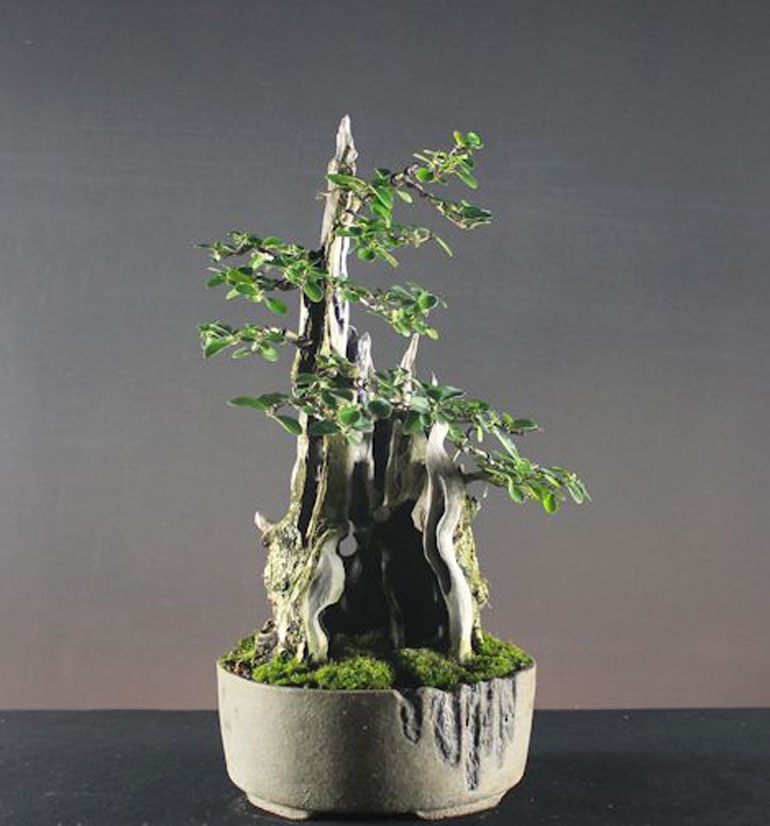
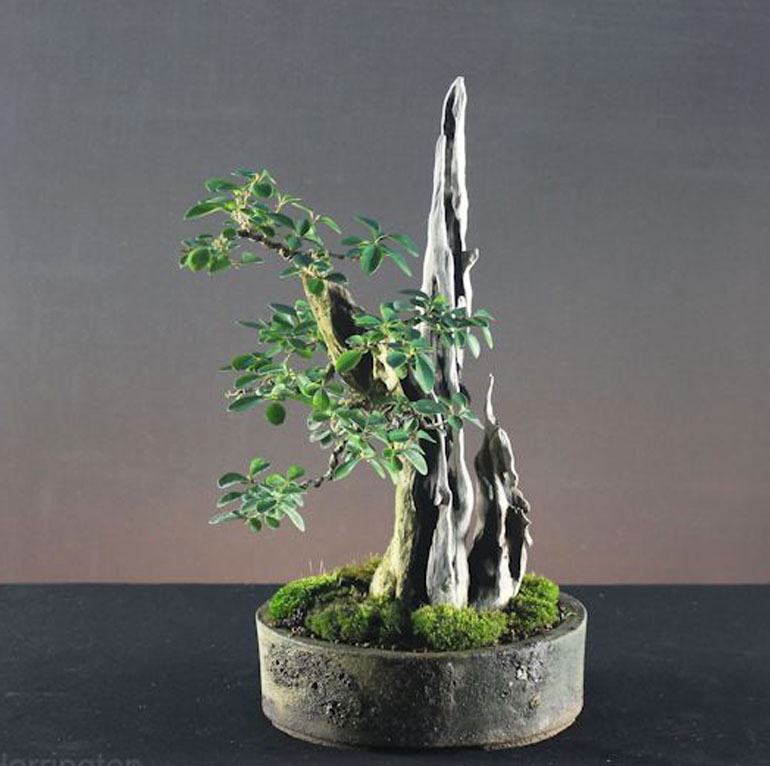 An old tree with modern feel. Collected from the same 70 year old hedge row as the one just above. Height 13" (34 cm).
An old tree with modern feel. Collected from the same 70 year old hedge row as the one just above. Height 13" (34 cm). 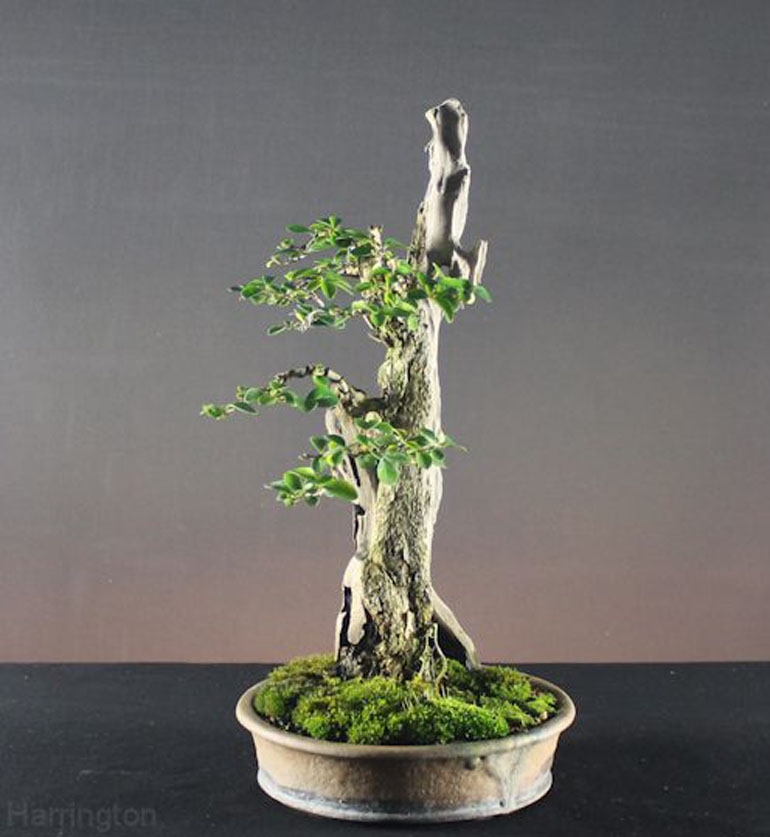
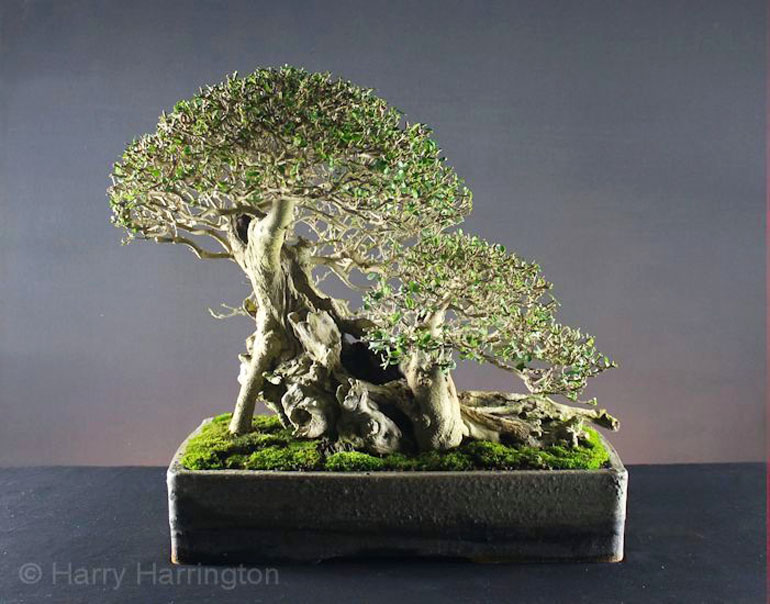
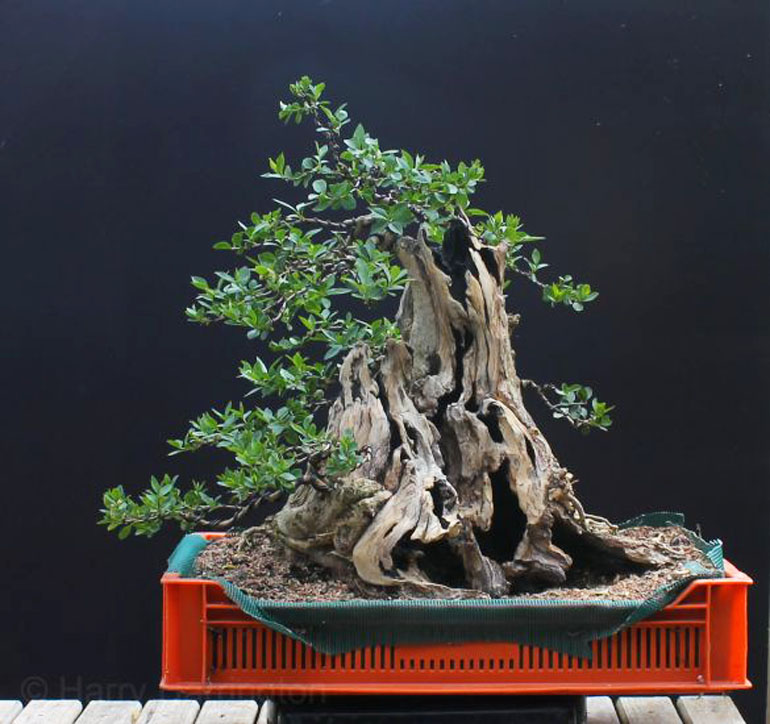

 Robert Steven's simulation of a Juniper that was submitted by Joe Graviss (the original photo is below).
Robert Steven's simulation of a Juniper that was submitted by Joe Graviss (the original photo is below).

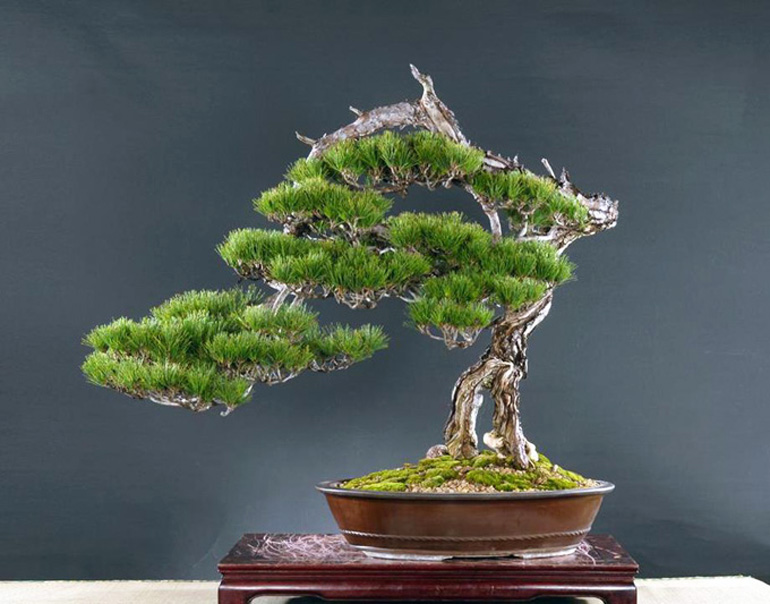 I like the way the fresh foliage seems to hang from the tree's ancient bones (though I'm not sure I've ever seen a stand so in need of refinishing). This strikingly unique bonsai is one of many excellent trees at
I like the way the fresh foliage seems to hang from the tree's ancient bones (though I'm not sure I've ever seen a stand so in need of refinishing). This strikingly unique bonsai is one of many excellent trees at 
